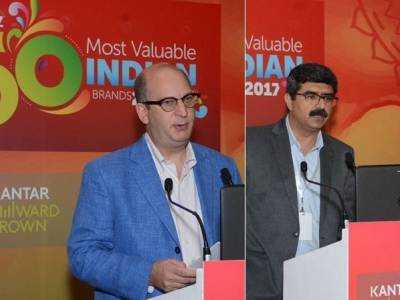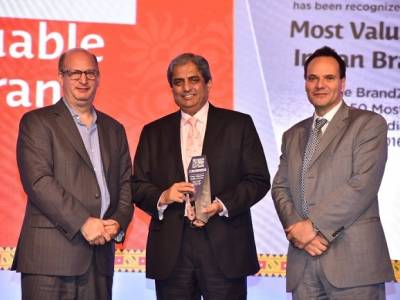India still prefers traditional media: Nigel Hollis, Kantar Millward Brown
Kantar Millward Brown recently launched its India-centric Media Predictions and Recommendations (2017) based on four varied sources:
- Global Media & Digital Prediction (2017)
- AdReaction (2017)
- Consolidated learnings from over 150+ cross-media & digital campaign evaluations
- Industry conversations with multiple stakeholders
These holistic set of studies not only provide a thorough environment scan of the year gone by (2016), but also provides predictions, hence recommendations to marketers for 2017 to increase the efficacy of their ad campaigns across platforms so as to ensure the best bang for their buck.
Adgully spoke with Nigel Hollis, Chief Global Analyst at Kantar Millward Brown, and Meheer Thakare, Head of Digital Solutions, South Asia,Kantar Millward Brown to know more about the efficacy of ad campaigns on various platforms, status of traditional media in India, programmatic advertising and more. Excerpts:
What is AdReaction all about, specifically for the Indian market? How can brand and agencies utilise it better? How can marketers use it as a tool?
Nigel Hollis: One of the key things about AdReaction is just how adverse we are making our potential audience and, therefore, the real challenge is to break through that audience with something that attracts their attention. We assume that we can get our ads in front of people without much effort, but that’s just not true. India is very interesting because one of the things that we did in the study was look at Gen Z (15 to 19 years old), who are going to be our future consumers. This is a really huge call-to-action, mostly for the advertisers as they are the ones with the budget. When Gen Z grows up, the question is will their behaviour change? My expectation is that it won’t. They are going to remain adverse and unless marketers do something to give them content that is remarkable and valuable, they are not going to pay attention to it.
Do you think the same pattern follows for advertising in traditional media?
Nigel Hollis: Although the younger generation is less receptive of advertising in general and they are more receptive to ads in traditional media. The worst format is the mobile popup, where they are completely not accepted. Mobile phone is a personal device and one uses it with a purpose, hence people find it highly irritating to be interrupted by popup videos.
Are the marketers aware that the advertisements they are putting up in the mobile space may not be as effective in any other domains?
Nigel Hollis: They are conscious of the fact that they don’t really have a good understanding of what is effective where. Everybody accepts that television has always been effective. And though everybody feels the pressure to move into digital, there is still a worry about whether they are spending their money in the right place. One of the studies we provide looks across different channels and their campaigns, so we know which channel has been the most productive in terms of shifting the key matrix.
Given today’s ecosystem, does traditional media still work? What is the reason that India hasn’t veered too much from the traditional space?
Nigel Hollis: India still prefers traditional – television, radio, print. It reflects the environment here in India. My understanding is that Internet penetration in this country is significantly lower. It is very noticeable in our AdReaction study. People in India are more likely to spend an hour a day or more on magazines and newspapers than people around the world and of course, the media money follows the eyeballs. However, marketers need to focus on a digitally oriented audience as well to make it worthwhile. I would like to point it out here that no matter where you are, the more channels you are using, the more impact you tend to see, because even if you are smart at advertising, you still need to reach the maximum number of people. By just using one channel on its own, you are missing the opportunity to create synergies which will multiply the impact for your campaign.
On brand experience taking centre stage...
Nigel Hollis: When I think about brand experience, the best experience is using the brand itself. There are great opportunities for creating or engaging with the value addition format, but I think the big challenge is to reach enough people with it.
Meheer Thakare: According to our study, the more challenging the campaign is, the better is the impact out of it. The campaigns that are breaking only on digital also tend you to give more impact. Digital complements the other spends that one does.
Havas Media is pulling out all of their campaigns from Google and YouTube, and some brands in India are also doing the same. Your comments.
Nigel Hollis: My suspicion is that this is a great bargain that has been offered. There are clearly issues that major brands do not want their content to be associated with other content that they feel are appropriate. At the same time, it is also a great opportunity to try and negotiate with the deal getting forward.
Do you think video advertising will drive brand impact going forward?
Nigel Hollis: I think video advertising is incredibly powerful, however video on mobile and laptops also present a big challenge because we can’t assume what will work in a more passive environment when we look at the behaviour related to online videos. On an average, it is just 12 seconds before someone says that he/she has seen enough and that time span is even shorter for the younger people. What brands really need to think about is how to structure that video to make the most of this impression.
Your thoughts on the future of programmatic advertising, programmtic targeting and their influence on branding.
Meheer Thakare: Last year in our predictions, our industry sources said that we do not have enough inventory for programmatic to run. This year there is a growth in the inventory volume wise. The growth is so fast that the quality of the inventory is still a concern.
Nigel Hollis: Which is why we were raising the issue of viewability and the people who are actually the right TG are highly variable as well. The more precise they try to make the programmatic targeting, the less accurate it tends to be. The thing about programmatic is there is a lot of promise, but the delivery is still questionable. The most successful programmatic campaigns or the ones that use data intensively and too often programmatic is not pulling out all the data resources. However, the other things that we see from our insight study are where we test and compare the people who are seeing the programmatic advertising with those who don’t. We know that programmatic can do a great job, moving the intent to buy, but is not necessarily good at changing the wider variables by making people more aware of the brand. They are focusing more on activation rather than true brand building.
How is ad-blocking impacting the advertising space?
Meheer Thakare: We know from our studies that while avoidance is high, the Gen Z is seen to use more hours of the avoidance strategies and pro-skippable formats. So, we take these formats positively.
Nigel Hollis: According to our AdReaction study in India, 57 per cent of the people said that if they saw an ad on their laptops or mobile phones, their immediate reaction was to skip it, this percentage is higher than the older generation.












Share
Facebook
YouTube
Tweet
Twitter
LinkedIn